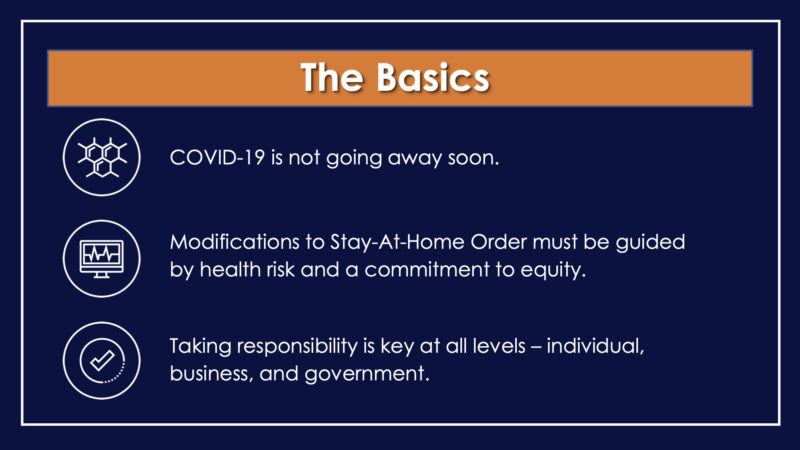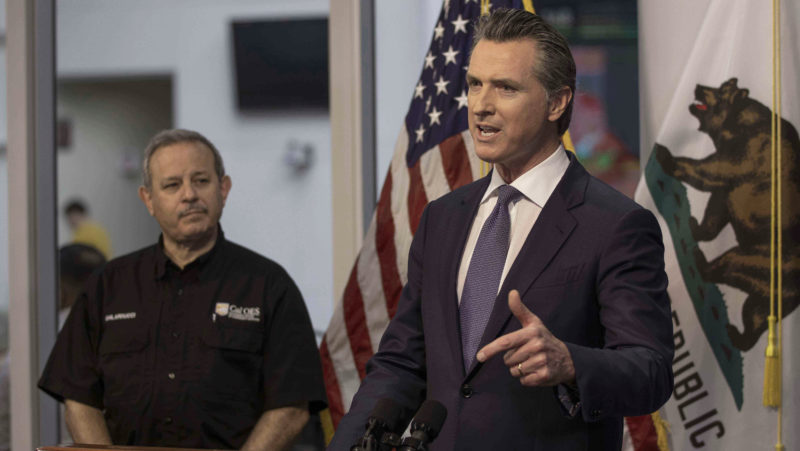Though Gov. Gavin Newsom had previously laid out a roadmap for reopening the California economy, which consisted of six indicators that would drive those decisions, he has now announced an additional four-stage plan for easing the stay-at-home orders.
This comes as Newsom says California has seen a stabilization in hospitalizations for COVID-19 over the last few weeks, and a majority of residents have abided by the orders.
“We’re still by no stretch of the imagination out of the woods there, it’s just stable — we’re not seeing substantial declines,” Newsom said. “But I want to caution everybody, if we pull back too quickly and we walk away from our incredible commitment to not only bend this curve, but to … suppress the spread of this virus, it could start a second wave that could be even more damaging than the first and undo all of the good work and progress that you’ve made.”

Here’s a breakdown of this four-stage plan:
Stage 1: Safety and preparedness
California is in the first stage of working toward reopening: making sure the essential workforce environment is as safe as possible.
This includes continuing to work toward acquiring enough personal protective equipment for those essential workers, ramping up testing and contact tracing capabilities and ensuring hospitals are ready to handle a potential surge.
Before moving to the next stage, safety guidance on reducing the risk of infections in the workplace will also need to be put in place sector-by-sector, and businesses need to start making those changes now so they’ll be ready to reopen when the state allows, according to Sonia Angell, California’s public health director.
Even so, Newsom says this stage will take weeks, not months.


Stage 2: Open lower-risk workplaces
Some nonessential businesses, such as schools and child care centers, are expected to be allowed to reopen in the coming weeks, after changes are made to prevent the spread of the virus, which can include having the next school year start sooner, possibly in July or August.
“We think it’s fundamental that we focus on this because we have to address learning gaps which have occurred over this time,” Angell said. “Ultimately, as we open up schools, as we make sure that that child care is more broadly available, it also makes it more possible for parents to go back to work. (But) school will look very different.”
Though this stage can take months, it will allow for the gradual reopening of retail stores for curbside pickups, manufacturing of nonessential items, such as toys, clothing and furniture, and office spaces for those who cannot telework, as well as some public spaces, like parks and trails, Angell added.


In addition, it’ll expand the workforce safety net by providing wage replacement and governmental policies that allow workers to stay home when sick, according to Angell.
Individual counties can also choose to relax stricter orders at their own pace locally in this stage.
Through these stages, people are expected to continue wearing masks and practicing physical distancing.
Stage 3: Open higher-risk workplaces
Still, it may be months before Californians can get their hair or nails done, visit gyms, entertainment venues, or in-person religious services, and see sporting events, as these activities are often done at much closer distances.
These locales will need a lot more modification to make them safe for people to move around in, Angell said.


“We need to know much more about the movement of (this) disease to be able to make data-informed decisions about what’s safe for folks,” she added. “We’ll need to think carefully about what kinds of provisions can be put in place so that people can join, but in a way that doesn’t expose them to increase risk for COVID-19.”
Stage 4: End of stay-at-home order
Only once Newsom’s six indicators have been met will the highest-risk workplaces, as well as large gatherings, such as concerts, conventions and sporting events with live audiences, be allowed to resume, Angell said.
“At that time, we will know that we have identified a way that we can keep people safe from COVID-19, either from population immunity or from vaccinations,” she added.
Newsom said California is still “months” away from this stage.








